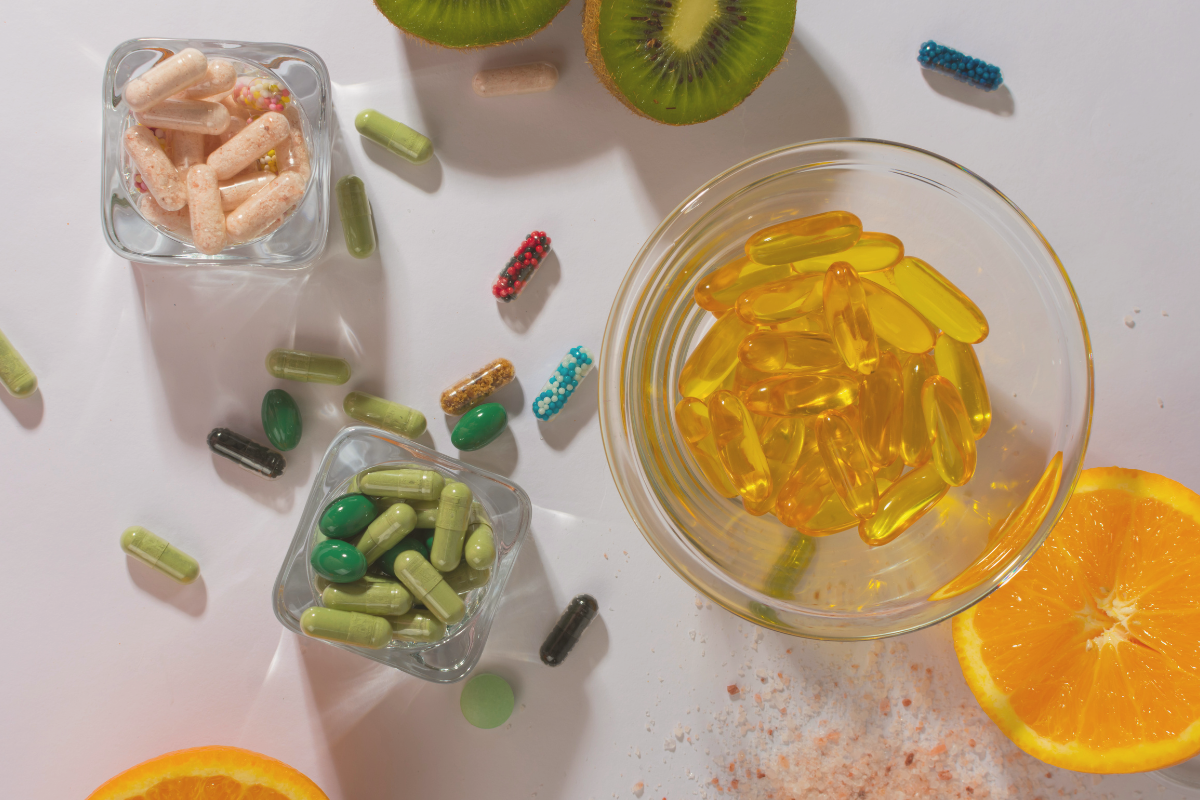9 Easy Elimination Diet Meal Plan Ideas To Feel Better Faster

Key Takeaways
-
Elimination diet meal plans work by removing common trigger foods to identify sensitivities that affect digestion, mood, and energy.
-
Structuring your elimination diet menu plan in advance helps avoid hidden ingredients and simplifies daily food choices.
-
Easy meal ideas like smoothies, grain-free stir-fries, and veggie-packed soups support nutrient intake while giving your gut a break.
-
Tracking symptoms and using a two-phase process ensures you get clear data about what your body responds well to.
- Roots Nutrition supports your reset with organic, allergen-free supplements that help you stay nourished throughout the elimination process.
What Is An Elimination Diet Meal Plan And Why It Matters
An elimination diet meal plan removes groups of foods that often trigger bloating, headaches, joint discomfort, or skin irritation, then reintroduces them in a controlled way to spot hidden sensitivities. This targeted approach respects bioindividuality because every digestive tract, microbiome, and metabolic profile reacts slightly differently to common proteins, sweeteners, and additives.
“Instead of guessing what bothers you, you follow a structured timeline that lets your immune system quiet down while you collect clear feedback from your body.”
Many people notice lighter digestion, steadier energy, and clearer thinking within ten to fourteen days once aggravating foods disappear from the plate. A measured re‑introduction phase then tells you exactly which ingredients belong on your personal “safe” list. That data empowers you to keep feeling better without restrictive eating long‑term, and it forms a practical launchpad for building a sustainable, easy elimination diet meal plan you can trust.
9 Easy Elimination Diet Meal Plan Ideas To Feel Better Faster
The following recipes keep ingredient lists short, use whole‑food staples found at any grocery store, and respect common elimination guidelines (no gluten, dairy, soy, corn, peanuts, or refined sugar). Rotate them through breakfast, lunch, and dinner for balanced fibre, protein, and anti‑inflammatory phytonutrients.
1. Cauliflower Rice Stir‑Fry With Turmeric & Ginger

Swapping regular rice for riced cauliflower cuts empty starch while boosting cruciferous antioxidants that support phase‑II liver detox. Start by sautéing fresh ginger and garlic in avocado oil, then add carrots, broccoli florets, and a sprinkle of turmeric for a golden hue. Finish with coconut aminos for gentle umami without soy.
Each bowl supplies around seven grams of fibre and delivers curcumin and gingerol compounds shown to ease oxidative stress. Enjoy it after a busy workday, and your digestion will stay calm because the dish skips grains yet still satisfies stir‑fry cravings.
2. Chia Seed Pudding With Coconut Milk & Berries

Thick chia pudding sets overnight, giving you an effortless grab‑and‑go breakfast that steadies blood sugar through soluble fibre and plant omega‑3s. Simply whisk full‑fat canned coconut milk, vanilla extract, and cinnamon with chia seeds, then refrigerate for eight hours. Top with fresh blueberries or raspberries at serving time.
This pudding keeps you comfortably full for up to four hours while delivering roughly ten grams of fibre and no added sweeteners. The combination will curb mid‑morning snack urges and supply antioxidant anthocyanins that protect cellular health.
3. Elimination Diet Detox Smoothie

Blend spinach, frozen pineapple, green apple, cucumber, fresh mint, and unsweetened almond milk for a refreshing green glass. Add a tablespoon of ground flaxseed for lignans that encourage healthy estrogen metabolism. The natural acidity from pineapple and apple masks spinach flavour, making it kid‑friendly.
One serving floods cells with vitamin C, magnesium, and potassium, which all support normal fluid balance and mitochondrial efficiency. Sip this smoothie first thing, and you will meet at least one‑third of your daily produce goal before leaving home.
4. Quinoa Veggie Bowl With Lemon‑Tahini Dressing

Rinse tricolour quinoa to remove saponins that can irritate sensitive stomachs, then simmer until fluffy. Layer roasted zucchini, bell peppers, and baby spinach over the grains, drizzle with a quick sauce of tahini, lemon juice, and garlic, and sprinkle hemp hearts for complete protein.
The meal provides all nine essential amino acids and approximately 12 grams of plant protein without animal products. A bright citrus kick stimulates gastric juices, improving nutrient absorption so you gain maximum value from every bite.
5. Baked Wild Salmon With Roasted Root Vegetables

Season salmon fillets with sea salt, dill, and lemon zest, then bake at 400°F until the flesh flakes easily. On a second sheet pan, roast cubed sweet potato, parsnip, and beet tossed in olive oil and thyme. The oils released from salmon supply EPA and DHA, fats that support brain clarity.
Paired with colourful roots, this dinner covers your omega‑3 needs for the day and delivers more than twenty micrograms of vitamin D, a nutrient linked to balanced immune signalling. Your joints and mood will thank you for the fatty‑acid boost.
6. Clean Chicken & Veggie Bowl

Poach skinless chicken breasts in low‑sodium broth with bay leaf and peppercorns for tender protein that stays juicy without extra fat. Shred the meat, then pile it over steamed broccoli, cauliflower, and sliced avocado. Dress lightly with olive oil and a squeeze of lime.
A single bowl supplies roughly thirty grams of lean protein and half the recommended daily intake of vitamin K from avocado and broccoli, supporting normal blood clotting and bone metabolism.
“It’s a meal you can meal‑prep on Sunday that still tastes fresh on Thursday.”
7. Elimination Diet Soup Recipe

Simmer diced celery, onion, carrot, zucchini, and butternut squash in vegetable stock infused with rosemary and bay. Finish with chopped kale and a spoonful of coconut cream for silky texture. No beans or nightshades keep the broth gentle on sensitive guts.
Eating two cups provides over 100 percent of daily vitamin A from beta‑carotene and more than six grams of fibre, helping to maintain stool consistency without heavy seasoning or heat. Freeze leftovers in mason jars so lunch will always be ready when you need it.
8. Sweet Potato & Lentil Curry

Sauté minced garlic and shallot in coconut oil, add cubed sweet potato, soaked red lentils, and a mix of cumin, coriander, and mild curry powder that skips chilli for a lower histamine load. Simmer in coconut milk until thick and spoon over steamed cauliflower.
This curry supplies a stable 4:1 ratio of complex carbohydrate to protein, giving muscles slow‑release energy during afternoon slumps. Every bowl brings nearly fifteen milligrams of iron in a plant form that pairs well with vitamin‑C‑rich cauliflower for better uptake.
9. Lettuce Wraps With Ground Turkey & Avocado

Brown ground turkey in a skillet with grated zucchini, diced onion, and cilantro. Season only with garlic powder and sea salt, then scoop the mixture into crisp romaine leaves. Top with diced avocado and a squeeze of lime for refreshing acidity.
You gain twenty‑two grams of protein and healthy monounsaturated fat while skipping tortillas and cheese, keeping total carbohydrate load under ten grams. The wraps hold neatly, making them perfect for office lunches that support your elimination phase without crumbs or sauces.
How To Build An Easy Elimination Diet Menu Plan That Works
Structured planning turns a list of recipes into a confident routine that syncs with your calendar and energy needs. Use the steps below as anchors when shaping your elimination diet menu plan so meals land on the table with minimal stress.
Choose Your 2‑Phase Timeline
Select a minimum of fourteen days for the removal phase, plus three to five days for each re‑introduction challenge. Mark these dates on a visible planner and share them with family so social events align. Planning the full timeline in advance prevents “accidental” trigger tastings that reset your clock. A clear schedule also boosts accountability, since you can measure progress against specific milestones rather than vague intentions.
Stock A Safe‑Food Pantry
Fill cupboards with non‑perishable staples such as coconut milk, quinoa, canned wild salmon, and every herb and spice you enjoy that fits removal guidelines. Keep a fresh box of spring‑mix greens and pre‑cut vegetables in the fridge for quick sides. Shopping once for essentials saves time on busy evenings and limits temptations from daily store trips. A ready supply of compliant foods will turn hunger into creativity rather than frustration.
Track Symptoms Like A Scientist
Use a simple notebook or a free app to record each meal, ingredient list, sleep quality, energy level, and digestive comfort. Aim for honest entries twice a day so patterns emerge quickly. Objective data will reveal hidden triggers even if you strongly suspect only gluten or dairy. Seeing cause‑and‑effect relationships on paper motivates you to stay consistent through the full elimination cycle.
Common Elimination Diet Plan Mistakes To Avoid On Day One
Starting strong encourages positive momentum, yet small oversights can delay positive results. Watch for these avoidable errors before they derail your goals.
- Skipping meal prep: Rushed cooking often leads to grabbing snacks that contain hidden wheat or soy.
- Forgetting to read condiments: Many sauces hide corn syrup or modified starch that can reignite symptoms.
- Ignoring portion balance: Too much fruit without protein spikes blood sugar and invites cravings later.
- Under‑hydrating: Adequate water supports natural detox pathways and eases bowel movements.
- Over‑restricting: Removing random extra foods provides no extra benefit and risks nutrient gaps.
-
Neglecting sleep: Reduced rest raises cortisol, masking accurate feedback from dietary changes.
Review these points each morning to keep your elimination diet plan on track. A quick checklist will remind you that steady habits, not willpower alone, secure the outcome you want.
How Roots Nutrition Can Help With Your Elimination Diet Plan
Roots Nutrition supports your personalised elimination journey with practitioner‑formulated blends that bridge nutrient gaps without common allergens. Our targeted powders and capsules rely on organic herbs, bioavailable minerals, and clinical‑grade vitamins, giving you iron‑clad confidence that “safe food” days still meet essential requirements. Transparent testing protocols, third‑party certifications, and clear dosing guidance reflect our commitment to credibility, while a complimentary consultation helps you pair products with the elimination diet plan menu that fits your goals. Trust Roots Nutrition to supply the foundational support you need while you listen closely to your body’s signals.
Common Questions About Elimination Diet Meal Plan
What foods should I avoid during an elimination diet meal plan?
You’ll want to avoid common irritants like gluten, dairy, soy, corn, refined sugars, eggs, and nightshades. These ingredients often trigger bloating, fatigue, skin issues, or mood swings, even in small amounts. Removing them lets your immune and digestive systems reset without daily friction. Roots Nutrition helps bridge any nutritional gaps during this phase with clean, allergen-free support that aligns with your elimination diet plan.
How long should I stay on an elimination diet before reintroducing foods?
Most elimination diet plans recommend a strict phase of 2 to 3 weeks before testing individual foods again. This window allows symptoms to calm down so you can clearly recognize any reactions during reintroduction. Staying consistent matters more than going longer. If your energy feels more stable and digestion improves, Roots Nutrition can support you through the next phase with gentle, targeted wellness bundles.
Can an elimination diet help with fatigue or brain fog?
Yes, many people experience clearer thinking and more consistent energy when trigger foods are removed from their routine. Inflammation in the gut often affects neurotransmitter activity and nutrient absorption, which can make your brain feel sluggish. A well-structured elimination diet plan removes that interference, and adding support from high-potency, organic supplements can enhance that clarity during the reset.
Is it okay to exercise during an elimination diet plan?
Gentle movements like walking, stretching, or low-impact workouts are perfectly safe during the elimination phase. In fact, staying active can promote better digestion and circulation while helping reduce stress. Just be sure to support recovery with balanced meals and hydration. Roots Nutrition’s nutrient-rich options can help you maintain stamina even while following a simplified menu.
How can I make elimination diet meals easier to stick with every day?
Batch cooking and meal planning will save time and reduce the temptation to default to processed foods. Stick with a simple menu of whole, familiar ingredients, and rotate a few go-to recipes that you enjoy. When you pair that with targeted supplementation, like those offered by Roots Nutrition, you stay nourished and consistent without needing to micromanage your food every day.




